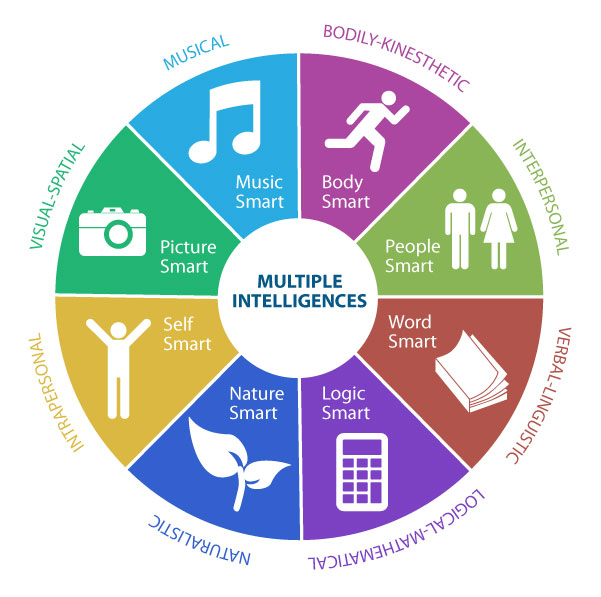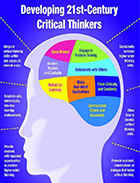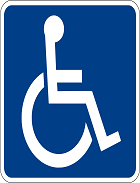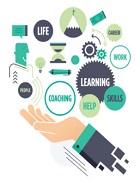Howard Gardner's Multiple Intelligences: Something for everyone!
Howard Gardner's Multiple Intelligences: Something for everyone!
- Editorial Team
theteacher.in
A very big problem with which teachers and school administrators have struggled since the earliest days of organised education is that being intelligent does not equal to scoring well in exams. This is where Howard Gardner’s theory comes in. The theory is changing educators’ perceptions about what is ‘smart’. The theory is changing the way some teachers teach.
Howard Gardner's book, ‘Frames of Mind: The Theory of Multiple Intelligences’ (Basic Books, 1983), seemed to answer many questions for experienced teachers, when it first burst on to the scene. Most teachers had students who didn't fit the traditional mould; the students were bright, but they didn't excel in tests. Howard Gardner’s theory claims that intelligence of many types gave everyone an insight into the minds of such students and taught everyone to look at what a student could do well, rather than focus on what he/she could not do.
Gardner’s books that followed, such as ‘The Unschooled Mind: How Children Think and How Schools Should Teach’ (Basic Books, 1991) and ‘Multiple Intelligences: The Theory in Practice’, (Basic Books, 1993) also played a key role in changing the way teaching and evaluations took place in schools.
Who is Howard Gardner?
Howard Gardner, Ph.D., is the author of many books and articles, and a professor at Harvard University. Long held assumptions about intelligence have been challenged by his theories – the key focus being the assumption of single level intelligence. Dr. Gardner also co-directs Harvard's Project Zero.
The original seven intelligences
Howard Gardner first introduced to us seven different kinds of intelligence in his book ‘Frames of Mind’.
- Linguistic intelligence: sensitivity to the meaning and order of words.
- Logical-mathematical intelligence: ability in mathematics and other complex logical systems.
- Musical intelligence: the ability to understand and create music.
- Spatial intelligence: the ability to ‘think in pictures’, to perceive the visual world accurately, and recreate/alter it.
- Bodily-kinesthetic intelligence: the ability to use one's body in a skilled way, for self-expression or toward a goal.
- Interpersonal intelligence: an ability to perceive and understand other individuals -- their moods, desires, and motivations.
- Intrapersonal intelligence: an understanding of one's own emotions.

Howard Gardner talks about an eighth intelligence
Then, Gardner identified the ‘naturalist intelligence’, an eighth form of intelligence.
Gardner said, "The naturalist intelligence refers to the ability to recognise and classify plants, minerals, and animals, including rocks and grass and all varieties of flora and fauna. The ability to recognise cultural artefacts like cars or sneakers may also depend on the naturalist intelligence. Some people from an early age are extremely good at recognising and classifying artefacts. For example, we all know kids who, at 3 or 4, are better at recognising dinosaurs than most adults."
The naturalist intelligence mixed with Gardner's definition of intelligence as "the human ability to solve problems or to make something that is valued in one or more cultures." The naturalist intelligence met Gardner's specific criteria:
“Is there a particular representation in the brain for the ability?
Are there populations that are especially good or especially impaired in a certain type of intelligence?
Can an evolutionary history of the intelligence be seen in animals other than human beings?”
Implementing Gardner's theory in the classroom
When asked how educators across the world could and should implement the theory of multiple intelligences, Gardner says, "It’s very important that a teacher takes individual differences among kids very seriously. The bottom line is a deep interest in children and how their minds are different from one another, and in helping them use their minds well."
Awareness about ‘multiple intelligence’ led to teachers adopting various methods to help children better in classrooms. In ‘Variations on a Theme: How Teachers Interpret MI Theory’, (Educational Leadership, September 1997), Linda Campbell describes five approaches to curriculum change:
- Lesson design: this might involve team teaching; using all or several of the intelligences in their lessons, or asking student opinions about the best way to teach and learn certain topics.
- Interdisciplinary units
- Student projects; to teach students to ‘initiate and manage complex, difficult projects’.
- Assessments that are devised to allow students to show what they have learnt.
- Apprenticeships, which can allow students to gain a complete understanding of a valued skill gradually, with effort, over time. Gardner feels that apprenticeships "should take up about one-third of a student's schooling experience."
To better understand the learners in their midst, teachers and administrators need to completely understand the MI theory in themselves. Then, they can allow students to safely explore and learn in many ways, and they can help students direct their own learning. Educators can help students understand and appreciate their strengths, identify activities that students are good at and foster a real world connect, to further build upon a child’s strengths.























